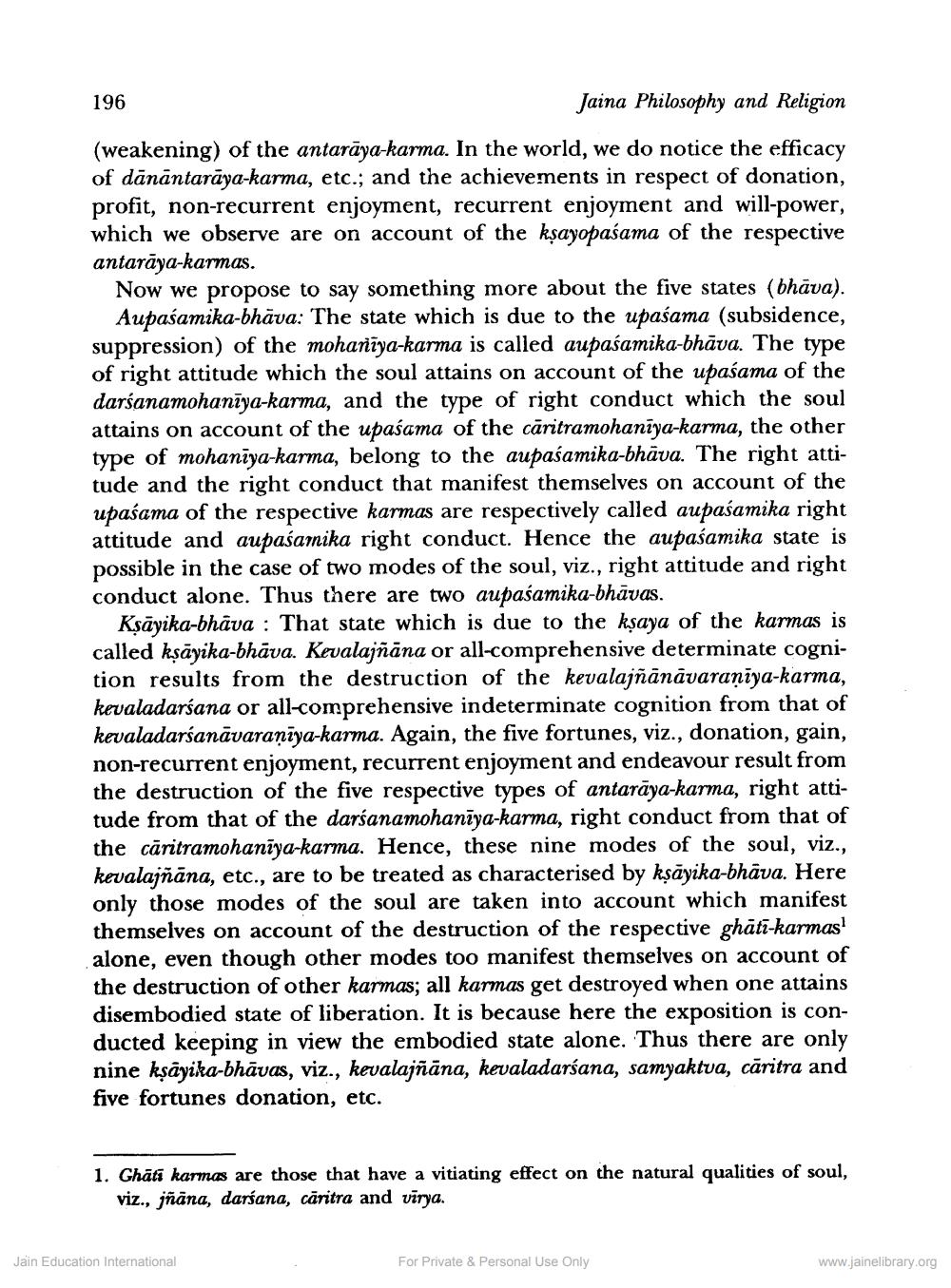________________
Jaina Philosophy and Religion
(weakening) of the antarāya-karma. In the world, we do notice the efficacy of dānāntarāya-karma, etc.; and the achievements in respect of donation, profit, non-recurrent enjoyment, recurrent enjoyment and will-power, which we observe are on account of the kṣayopasama of the respective antarāya-karmas.
Now we propose to say something more about the five states (bhāva). Aupaśamika-bhava: The state which is due to the upasama (subsidence, suppression) of the mohaniya-karma is called aupaśamika-bhāva. The type of right attitude which the soul attains on account of the upasama of the darśanamohaniya-karma, and the type of right conduct which the soul attains on account of the upasama of the caritramohaniya-karma, the other type of mohaniya-karma, belong to the aupasamika-bhāva. The right attitude and the right conduct that manifest themselves on account of the upasama of the respective karmas are respectively called aupaśamika right attitude and aupaśamika right conduct. Hence the aupaśamika state is possible in the case of two modes of the soul, viz., right attitude and right conduct alone. Thus there are two aupaśamika-bhāvas.
196
Kṣayika-bhava: That state which is due to the kṣaya of the karmas is called kṣāyika-bhāva. Kevalajñāna or all-comprehensive determinate cognition results from the destruction of the kevalajñānāvaraṇīya-karma, kevaladarśana or all-comprehensive indeterminate cognition from that of kevaladarśanavaraniya-karma. Again, the five fortunes, viz., donation, gain, non-recurrent enjoyment, recurrent enjoyment and endeavour result from the destruction of the five respective types of antaraya-karma, right attitude from that of the darśanamohaniya-karma, right conduct from that of the caritramohaniya-karma. Hence, these nine modes of the soul, viz., kevalajñāna, etc., are to be treated as characterised by kṣayika-bhāva. Here only those modes of the soul are taken into account which manifest themselves on account of the destruction of the respective ghātī-karmas1 alone, even though other modes too manifest themselves on account of the destruction of other karmas; all karmas get destroyed when one attains disembodied state of liberation. It is because here the exposition is conducted keeping in view the embodied state alone. Thus there are only nine kṣāyika-bhāvas, viz., kevalajñāna, kevaladarśana, samyaktva, căritra and five fortunes donation, etc.
1. Ghati karmas are those that have a vitiating effect on the natural qualities of soul, viz., jñāna, darśana, caritra and virya.
Jain Education International
For Private & Personal Use Only
www.jainelibrary.org




